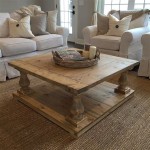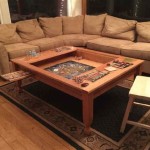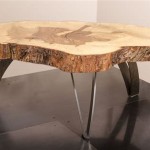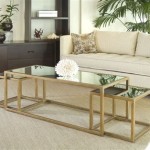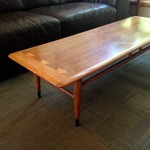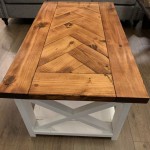What Causes a Glass Patio Table to Shatter When Turned?
Glass patio tables offer an appealing aesthetic to outdoor spaces, providing a sleek and modern surface for dining and relaxation. However, the sudden and unexpected shattering of these tables, particularly when being turned or moved, is a relatively common occurrence that can be both startling and potentially dangerous. This article explores the underlying causes of this phenomenon, delving into the properties of glass, environmental factors, and manufacturing processes that contribute to the shattering of glass patio tables.
Understanding the susceptibility of glass to breakage requires an appreciation for its inherent characteristics. Glass, while appearing solid and uniform, is actually an amorphous solid, meaning its molecules are arranged randomly, lacking the long-range order found in crystalline materials. This disordered structure makes glass inherently brittle and prone to fracture under stress. Even minor imperfections or stresses within the glass can act as points of weakness, initiating a crack that can rapidly propagate across the entire surface.
Many people believe that glass patio tables are made of the same type of glass used in windows, but this is often incorrect. They are typically made of tempered glass, which is a type of safety glass that has been heat-treated to increase its strength and durability. This process involves heating the glass to a high temperature followed by rapid cooling. This rapid cooling creates compressive stress on the surface of the glass and tensile stress in the interior. This balance of stresses makes tempered glass much stronger than regular glass. However, it also means that when tempered glass does break, it shatters into small, relatively harmless fragments, rather than large, sharp shards.
Stress Concentrations and Micro-Fractures
One of the primary reasons a glass patio table might shatter when turned is the presence of stress concentrations and micro-fractures within the glass. These imperfections can arise during the manufacturing process, transportation, or from everyday use. Even seemingly minor impacts, such as dropping a heavy object onto the table or even repeatedly placing items on it with force, can create small cracks or chips on the surface or along the edges. These seemingly insignificant flaws act as stress concentrators, meaning they amplify the stress applied to the glass in that specific area.
When a glass table is turned, the existing stress distribution within the glass changes. This shift in stress can cause the concentrated stress at the micro-fractures to exceed the glass's tensile strength, leading to crack propagation. If a sufficiently large crack forms, the entire table can shatter catastrophically. The likelihood of this occurring is heightened if the table has been subjected to multiple impacts or if the initial micro-fractures were particularly severe.
The process of turning the table itself can introduce torsional stress, which is a twisting force. Torsional stress is especially dangerous for brittle materials like glass because it can quickly exceed the material's shear strength, leading to sudden failure. Even if the table is handled carefully, slight unevenness in the surface it rests on can introduce additional stress points, increasing the probability of shattering when the table is rotated.
Environmental Factors: Temperature and Humidity
Environmental factors, particularly temperature fluctuations and humidity levels, significantly impact the structural integrity of glass patio tables. Glass expands and contracts with changes in temperature. Rapid or extreme temperature swings can induce thermal stress within the glass. For instance, a table that has been baking in the sun all day and is then suddenly cooled by a summer rainstorm experiences rapid contraction on the surface. This contraction, while the interior of the glass remains warmer and less contracted, creates significant tensile stress on the surface. If this stress exceeds the glass's strength, it can lead to cracking and ultimately shattering.
High humidity can also contribute to the problem. Moisture can seep into existing micro-fractures in the glass. This moisture can then react with the glass surface, weakening the bonds between the glass molecules. In colder temperatures, this moisture can freeze and expand, further widening the cracks and exacerbating the stress concentrations. Over time, the cumulative effect of these environmental factors can significantly weaken the glass, making it more prone to shattering when subjected to even relatively minor stress, such as turning the table.
Furthermore, prolonged exposure to ultraviolet (UV) radiation from sunlight can degrade the surface of the glass over time. UV radiation can break down the chemical bonds in the glass, making it more brittle and susceptible to fracture. While modern glass often contains additives to mitigate UV damage, these additives are not entirely effective, and the glass still experiences some degradation over extended periods of exposure to sunlight.
Manufacturing Defects and Quality Control
Manufacturing defects and inconsistencies in quality control during the production process are other potential contributors to the shattering of glass patio tables. During the tempering process, if the heating or cooling is not uniform, it can create uneven stress distribution within the glass. This uneven stress distribution can leave certain areas of the glass more vulnerable to fracture than others. Minute imperfections, such as air bubbles or inclusions of foreign materials within the glass, can also act as stress concentrators.
The quality of the glass itself also plays a crucial role. If the glass is not properly annealed (slowly cooled to relieve internal stresses) after it is formed, it can retain significant internal stresses that make it more susceptible to cracking. Furthermore, variations in the thickness of the glass can create uneven stress distribution. Thinner areas of the glass will be weaker and more prone to fracture than thicker areas.
Inadequate edge treatment is another common manufacturing defect. The edges of glass are particularly vulnerable to chipping and cracking. If the edges are not properly smoothed and polished during manufacturing, they can contain numerous micro-fractures that act as stress concentrators. A sharp, unfinished edge is much more likely to initiate a crack than a smooth, rounded edge. During quality control, these defects should ideally be identified and eliminated, but sometimes, substandard products make their way into the market.
The frame that supports the glass tabletop can also play a role. If the frame is not properly designed or if it is warped or uneven, it can place undue stress on the glass. The frame should provide even support across the entire surface of the glass to distribute the load evenly. Sharp edges or protrusions on the frame can also create stress points on the glass, increasing the risk of shattering.
Finally, damage incurred during shipping and handling can also compromise the integrity of the glass. Even if the glass is manufactured to high standards, it can be damaged during transportation if it is not properly packaged and secured. Impacts and vibrations during shipping can create micro-fractures that weaken the glass and make it more prone to shattering later on.
In summary, a combination of factors can contribute to the shattering of a glass patio table when turned. These factors encompass the inherent properties of glass, environmental influences, and potential manufacturing defects. The interplay between these elements can lead to a sudden and unexpected failure of the glass, highlighting the importance of careful handling, protection from extreme environmental conditions, and the selection of high-quality products. Regularly inspecting the glass for chips, cracks, and other signs of damage is recommended to mitigate the risk of catastrophic failure. Similarly, ensuring the supporting frame is stable and free of sharp edges that might contact the glass is also beneficial. While glass patio tables bring an element of elegance to outdoor spaces, understanding the potential for shattering enables users to reduce the risks associated with their use.

Glass Table Tops Can Suddenly Explode For No Specific Reason

Shattered Glass Table Top Outdoor Replacement

Glass Tables Are Exploding Here S Why

Glass Tables Are Exploding Here S Why

Glass Tables Are Exploding Here S Why

How To Repair Glass Patio Table Problems

Causes Of Spontaneous Glass Breakage And How To Prevent It Sieger Architektur Systems

Glass Tables Are Exploding Here S Why

How To Repair Glass Patio Table Problems

7 Tips To Keep Your Patio Glass Table From Shattering
Related Posts

